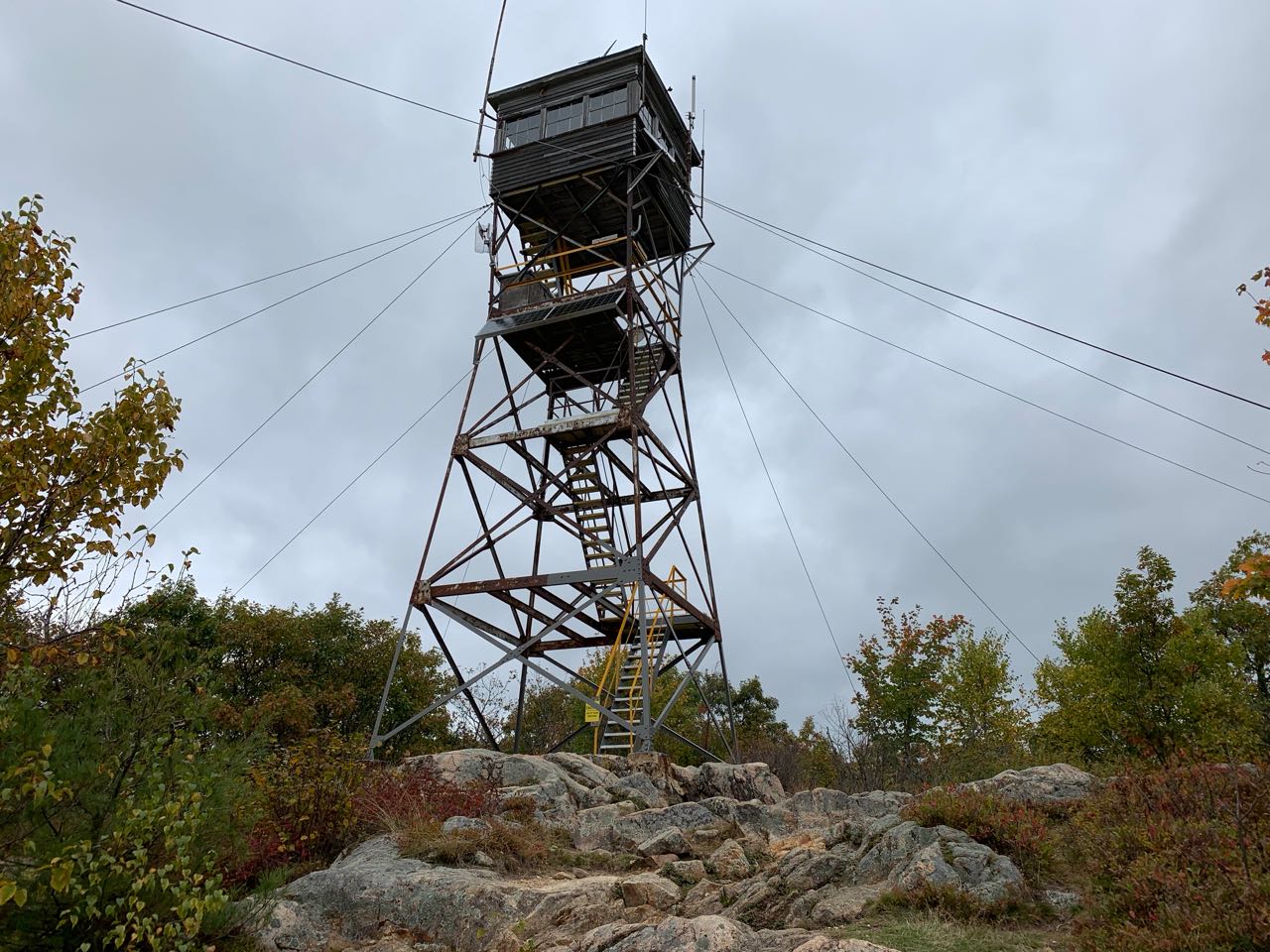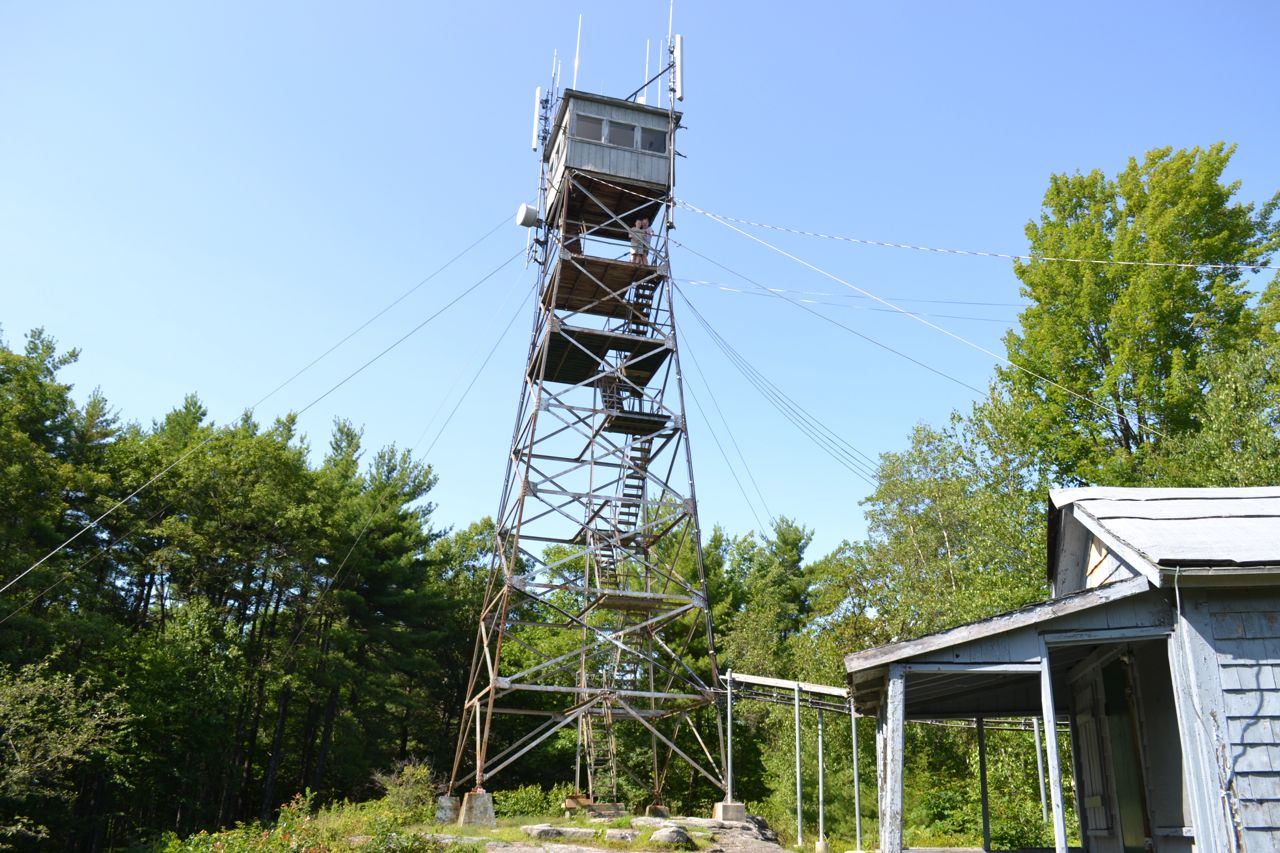Seven years earlier, in New Hampshire, the Society for the Protection of NH Forests reported that spring to be very dry. Very little rain had fallen for forty days. There had also been much logging, which had left dry branches and wood on the mountainsides. Many fires were started by locomotives and lightning. Because the fire detection back then was not
 effective and there were not any good communication systems, a quarter million acres of forest burned to the ground that year from over five hundred fires. Shortly after this disaster, the Mt. Pleasant Hotel Company built a fire tower on Mt. Rosebrook, which had already been burned in the fires. In 1909, the state began to fund the construction of towers with extra funds left over from fighting fires. They purchased telephones and wire for five new towers. The Appalachian Mountain Club allowed an abandoned hotel on Mt. Kearsarge North to be used as a lookout station. Most of the early fire towers were made out of logs, or were not even towers at all, but simply lookouts on pre-existing mountaintop hotels.
effective and there were not any good communication systems, a quarter million acres of forest burned to the ground that year from over five hundred fires. Shortly after this disaster, the Mt. Pleasant Hotel Company built a fire tower on Mt. Rosebrook, which had already been burned in the fires. In 1909, the state began to fund the construction of towers with extra funds left over from fighting fires. They purchased telephones and wire for five new towers. The Appalachian Mountain Club allowed an abandoned hotel on Mt. Kearsarge North to be used as a lookout station. Most of the early fire towers were made out of logs, or were not even towers at all, but simply lookouts on pre-existing mountaintop hotels.In 1910 the NH Timberland Owners Association, the state of New Hampshire, and the US Forest Service worked together to produce a system of fire towers in the White Mountains. That year, ten new towers were constructed, three of which were on pre-existing hotels or stations. The other seven, established on mountains Magalloway, Sugarloaf, Signal, Cambridge Black, Pine, Carrigain, and Osceola, were paid for by the NH Timberland Owners Association. The NHTOA and the state continued to build more towers, having a combined total of twenty-nine by 1917, while the US Forest service continued to run just two. A few years later, the state started taking down the wood and log structures and erecting new, more durable steel towers in their place. Soon, fire towers became an attraction to the public. Hikers would climb them to enjoy the views. Trails were blazed to the towers and dangerous ladders were replaced with safer stairs. This also prompted the US Forest Service to produce cards to give to the public that signified someone had visited a tower as part of a program to get the public to support forest fire prevention.
A large number of the towers were destroyed in the
 1938 hurricane, and new, more durable towers replaced them, along with eleven new towers. During World War II, some were used for enemy aircraft detection. Fire towers continued to keep watch and protect the forests until after World War II, when airplane fire detection was starting to be used. The towers owned by the Forest Service, now seventeen, were all destroyed by 1970. Many abandoned towers were labeled hazardous and were also destroyed.
1938 hurricane, and new, more durable towers replaced them, along with eleven new towers. During World War II, some were used for enemy aircraft detection. Fire towers continued to keep watch and protect the forests until after World War II, when airplane fire detection was starting to be used. The towers owned by the Forest Service, now seventeen, were all destroyed by 1970. Many abandoned towers were labeled hazardous and were also destroyed.By 1982, only fourteen towers were operational, and on June 9, 1983, all of the remaining towers were closed. The age of fire towers was over. The next year, the towers returned to operation, but only part-time. In 1992, sixteen towers were considered active, and still are today.
Sadly, only about thirty of the over eighty towers that were built remain. The sixteen that are considered active by the state can be visited through either hiking trails or roads, with the exception of one, on private property. Nine have been converted into viewing towers, and five others still standing have met with various fates: The towers on East Whitcomb and Signal remain lost in the forest; North Deer Mountain is visited by a hiking trail but has had its stairs removed, and Carter Tower stands a padlocked relic on the side of Route 2 in Jefferson. Amazingly, twelve of those thirty-one that are still around were first built as part of the original project in 1910. Remnants of the fifty-five others still exist in places. Cement footings can still be seen on top of many popular mountains, and some debris still can be found on top of some forested hills. Together they preserve the fascinating history of New Hampshire fire towers.